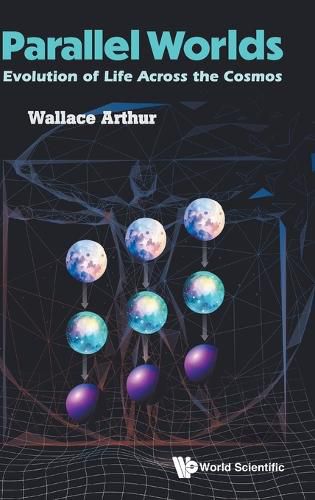Readings Newsletter
Become a Readings Member to make your shopping experience even easier.
Sign in or sign up for free!
You’re not far away from qualifying for FREE standard shipping within Australia
You’ve qualified for FREE standard shipping within Australia
The cart is loading…






This title is printed to order. This book may have been self-published. If so, we cannot guarantee the quality of the content. In the main most books will have gone through the editing process however some may not. We therefore suggest that you be aware of this before ordering this book. If in doubt check either the author or publisher’s details as we are unable to accept any returns unless they are faulty. Please contact us if you have any questions.
Humanity is fast approaching the point of being able to answer the age-old question: Are we alone in the cosmos? The answer will almost certainly turn out to be 'no'. This is virtually guaranteed by two discoveries made in the last hundred years or so: that the Milky Way is just one of countless galaxies; and that the number of planets beyond our solar system - 'exoplanets' - is vast.But what is extraterrestrial life actually like? What kinds of creatures roam the surfaces of alien planets or swim in their seas? Are they typically in the genre of 'life as we know it', or are they characterized by exotic forms and as-yet undiscovered metabolism? In Parallel Worlds, Wallace Arthur argues that we should expect to find creatures that are similar in broad terms to those of Earth. This can be anticipated because the environments of habitable planets have many parallel features, so Darwinian natural selection should work in parallel ways, producing broadly parallel trees of life.This book takes the form of a step-by-step argument in favour of the hypothesis that there are multiple worlds inhabited by life-forms that are broadly parallel to those of our home planet. Like all good hypotheses, it's testable. The testing won't be easy, and it isn't imminent; but it will happen eventually, providing humanity lasts for long enough.
$9.00 standard shipping within Australia
FREE standard shipping within Australia for orders over $100.00
Express & International shipping calculated at checkout
This title is printed to order. This book may have been self-published. If so, we cannot guarantee the quality of the content. In the main most books will have gone through the editing process however some may not. We therefore suggest that you be aware of this before ordering this book. If in doubt check either the author or publisher’s details as we are unable to accept any returns unless they are faulty. Please contact us if you have any questions.
Humanity is fast approaching the point of being able to answer the age-old question: Are we alone in the cosmos? The answer will almost certainly turn out to be 'no'. This is virtually guaranteed by two discoveries made in the last hundred years or so: that the Milky Way is just one of countless galaxies; and that the number of planets beyond our solar system - 'exoplanets' - is vast.But what is extraterrestrial life actually like? What kinds of creatures roam the surfaces of alien planets or swim in their seas? Are they typically in the genre of 'life as we know it', or are they characterized by exotic forms and as-yet undiscovered metabolism? In Parallel Worlds, Wallace Arthur argues that we should expect to find creatures that are similar in broad terms to those of Earth. This can be anticipated because the environments of habitable planets have many parallel features, so Darwinian natural selection should work in parallel ways, producing broadly parallel trees of life.This book takes the form of a step-by-step argument in favour of the hypothesis that there are multiple worlds inhabited by life-forms that are broadly parallel to those of our home planet. Like all good hypotheses, it's testable. The testing won't be easy, and it isn't imminent; but it will happen eventually, providing humanity lasts for long enough.